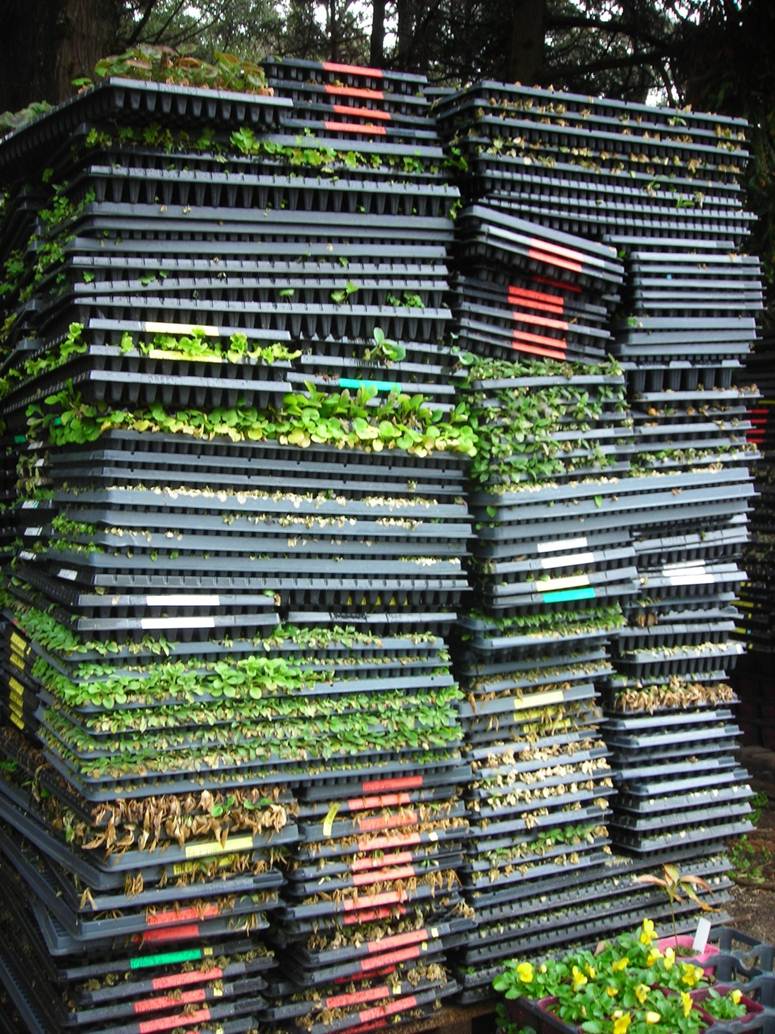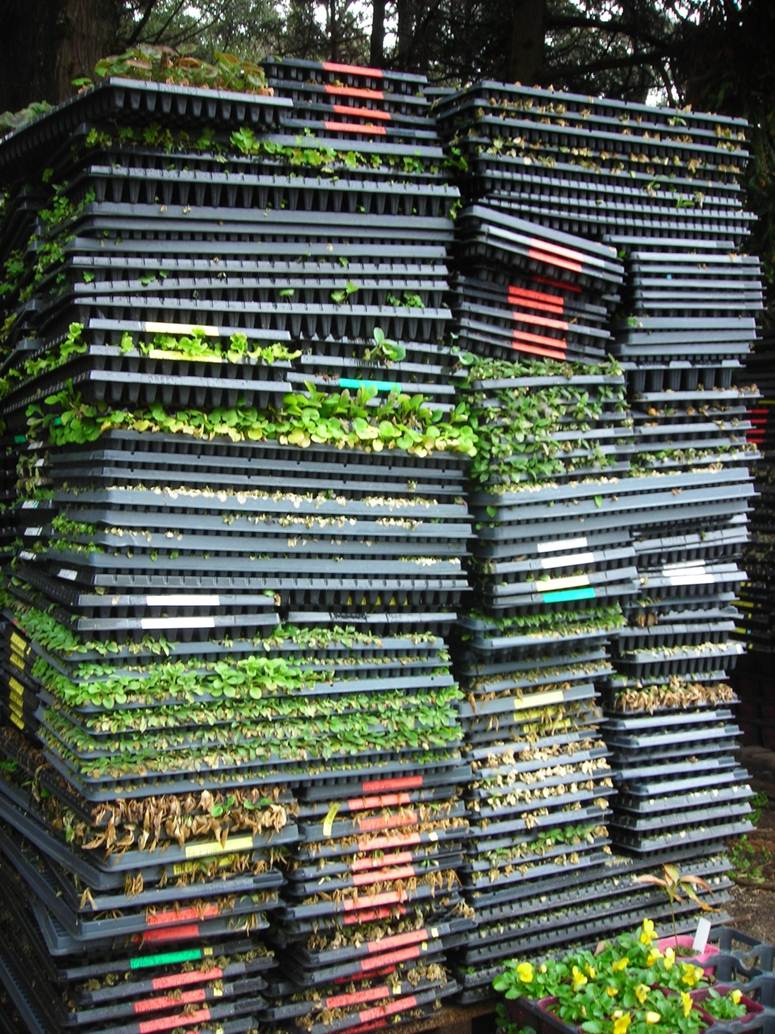
Managing Shrinkage
Shrink refers to the things you do that you don’t get paid for. There are a number of opportunities in your business where small changes in processes can significantly move more profits to your bottom line. The first step to understand shrink management is to define some terms that lead to loss profits.
Developing a dynamic forecast is the first step in managing your shrink. A good forecast allows you to have sufficient inputs (plants, pots, soil, labor and space) to produce the plants on time. When the forecast is too aggressive, the production plan creates dump. Successful growers “plan for profits and plant to plan.”
Buffer is the extra plants that you grow to ensure order fulfillment. The sell price includes the cost of the buffer since the buffer is never salable and is therefore pure cost. When growers don’t accurately manage buffers, the cost of production increases exponentially due to lost sales or increased dump. Eliminating all buffers is not a solution since an appropriate amount of buffer is the “grease” that makes growing easier. When establishing a shrink management program, monitoring and reducing the buffer cost is an integral part.
Customer turnover mandates that growers plan on selling 10 to 15 percent of their products to new customers. Pre-booking allows you to accurately plan for profits in the business plan. Speculation is the extra plants you produce, over what is pre-booked, to increase sales during robust sales periods. The cost of speculation is a double-edged sword where sales can drive new business opportunities, but failure to sell the speculation consumes the profits of 3+ plants that you have sold! In periods where sales are unpredictable, speculation becomes pure shrink.
Assortment management is one of the main “sleepers” in your shrink management program. For more than years, we engorged on new varieties hoping for increased sales. The new varieties created opportunities and expanded sales. Now is the time to review your product assortment to identify the crops that are making you money versus the crops that are consuming profits. It is shocking to see how much money growers lose every year by growing certain crops. Evaluate which varieties should stay in their assortment by calculating:
• Gross margin dollars per square foot of space used quickly tells you what crops are the most productive in generating profits. Rank the crops and annually drop the bottom 5 to 10 percent of the crops. Getting rid of the low performers will quickly reduce shrink and boost profits.
• Batch size is a simple number that accurately predicts potential shrink and inefficiency. Decreasing batch size creates an exponential cost increase to cover inefficiencies and buffer costs. Growers who produce just a couple of trays to satisfy a special customer, without adequately charging for the production, are creating pure shrink — things you do that you don’t get paid for.
• Variety growth rate determines if the anticipated growth is achieved. If after three years, the variety doesn’t achieve the expected sales, then consider eliminating or modifying the product to accelerate sales. Once a new variety has lost the ‘new luster’, it can quickly fall into the ‘no growth’ doldrums where costs increase faster than sales.
By aggressively dropping low performing varieties, you create space for new varieties to grow your business. In a flat market where new greenhouse space is not increasing, the only way to create opportunities for high growth new products is to drop the underperformers!
Putting Shrink Control into Action
Break your production activities into three core areas (manufacturing, growing and collation) to quickly identify areas where shrink is occurring. Set maximum shrink targets for each of these areas then determine ways to reduce the shrink with clear-cut goals for your employees. Measuring the targets with simple metrics, like key performance indicators (KPI) will keep everyone on target to achieving your goals.
1. Manufacturing consists of assembling the plants into their growing units. This involves not only filling and planting pots but also acquiring and managing the inputs (pots, plants, chemicals, soil etc.). Manufacturing is a “gerbil wheel” activity that doesn’t require a lot of thought and should be done fast and efficiently. Excess time and motions occur in manufacturing due to poorly laid out work areas, inefficient sequence of the process, long process times where short steps are better and a host of other efficiency steps that you can easily implement. Shrink occurs when employees are waiting for manufacturing steps to occur. How many are in your processes?
2. Growing is an impulsive, subjective process in most operations. To reduce costs, consider training your growing staff in water management techniques. Optimum water management will reduce chemical usage. Templates, or protocols, help instruct growers to use the right environment and chemical at the right time. Whenever I am called in to solve an out of control problem, I can usually trace the source of the problem to delayed problem identification and incorrect treatment strategy. Regular monitoring of the environment and pests with “alert” levels will call out emerging problems when it is easy and inexpensive to solve the problem reduces shrink. A list of suitable chemicals is your first line of defense in controlling pests. Too often, growers spray the wrong chemical for the pest then after several months realize that the treatment did nothing because it was the wrong chemical.
3. Collation is a repetitive process of moving the finished product to the customer — another “gerbil wheel” process. It is amazing how many different ways growers have concocted to complete this process. Unfortunately, most of the solutions involve a large number of people wandering about the greenhouse picking up plants. This approach is ‘“shrink on steroids.” A more rational approach is using software, lean-flow and other strategies to efficiently collate the orders. Many growers consume most of their profits on trying to ship the product on time. This is one area where huge saving can occur when a little forethought is used.
The quickest way to reduce shrink is to monitor an activity. “Klieg light” management puts the spotlight on an activity and monitors the performance on a weekly or monthly basis. Growers need to have KPIs that clearly identify when the process is going off plan.
In one of our operations, sowing operations were slower than industry standards. By setting a KPI on sowing operations, the sowing team showed a 25 percent improvement in throughput with increased accuracy and consistency. Once we put the new process in place, we saw a consistent improvement over the next year as they monitored their KPI for further improvement. Shrink management has to become part of the staff’s core beliefs. Measuring key activities, acknowledging good performance and calling out areas needing improvement can create a dynamic team spirit with reduced shrink in just about every activity.
What opportunities can you make the most of to increase profits and eliminate shrink?




 Video Library
Video Library 




















